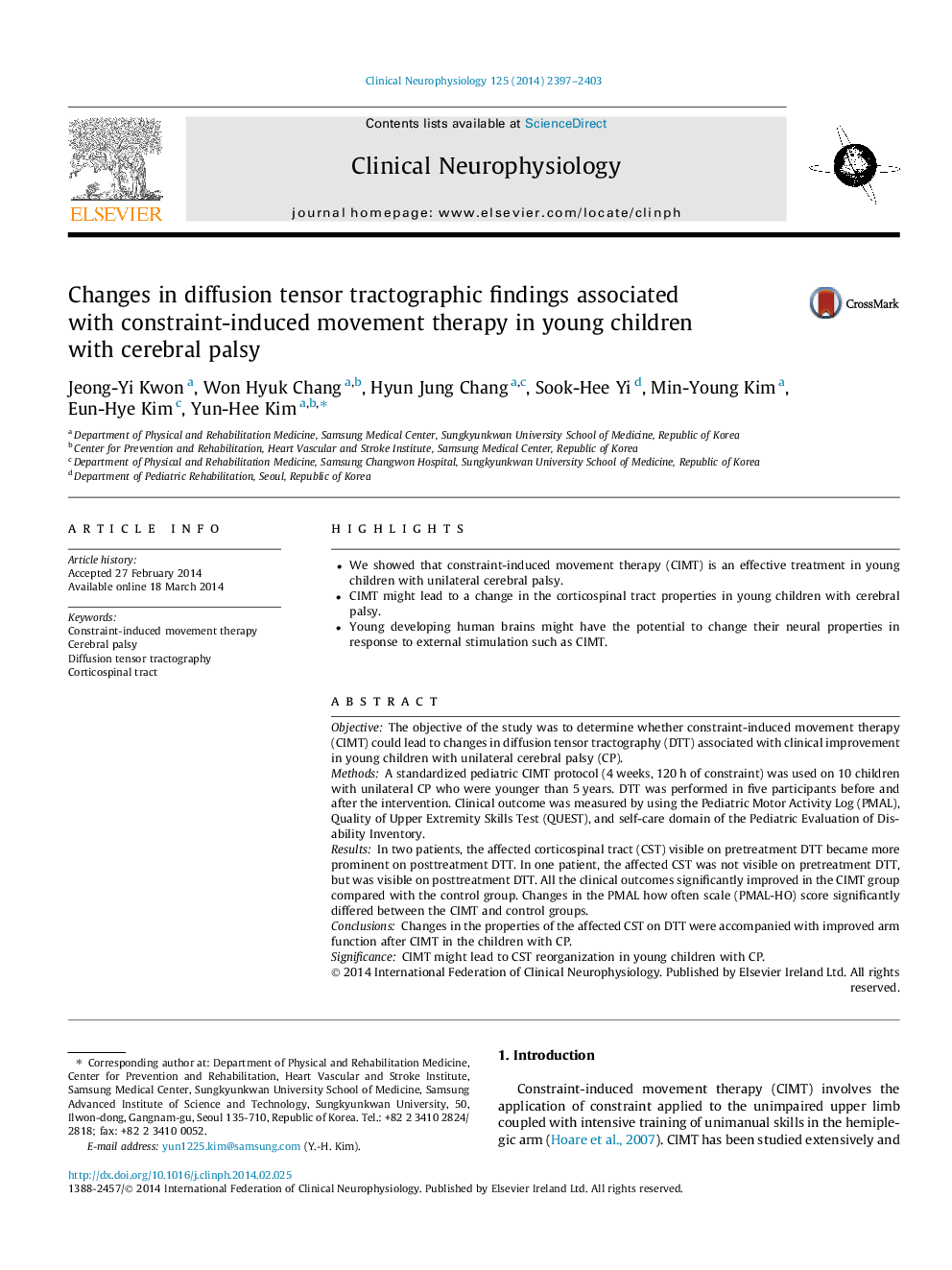| Article ID | Journal | Published Year | Pages | File Type |
|---|---|---|---|---|
| 3043456 | Clinical Neurophysiology | 2014 | 7 Pages |
•We showed that constraint-induced movement therapy (CIMT) is an effective treatment in young children with unilateral cerebral palsy.•CIMT might lead to a change in the corticospinal tract properties in young children with cerebral palsy.•Young developing human brains might have the potential to change their neural properties in response to external stimulation such as CIMT.
ObjectiveThe objective of the study was to determine whether constraint-induced movement therapy (CIMT) could lead to changes in diffusion tensor tractography (DTT) associated with clinical improvement in young children with unilateral cerebral palsy (CP).MethodsA standardized pediatric CIMT protocol (4 weeks, 120 h of constraint) was used on 10 children with unilateral CP who were younger than 5 years. DTT was performed in five participants before and after the intervention. Clinical outcome was measured by using the Pediatric Motor Activity Log (PMAL), Quality of Upper Extremity Skills Test (QUEST), and self-care domain of the Pediatric Evaluation of Disability Inventory.ResultsIn two patients, the affected corticospinal tract (CST) visible on pretreatment DTT became more prominent on posttreatment DTT. In one patient, the affected CST was not visible on pretreatment DTT, but was visible on posttreatment DTT. All the clinical outcomes significantly improved in the CIMT group compared with the control group. Changes in the PMAL how often scale (PMAL-HO) score significantly differed between the CIMT and control groups.ConclusionsChanges in the properties of the affected CST on DTT were accompanied with improved arm function after CIMT in the children with CP.SignificanceCIMT might lead to CST reorganization in young children with CP.
